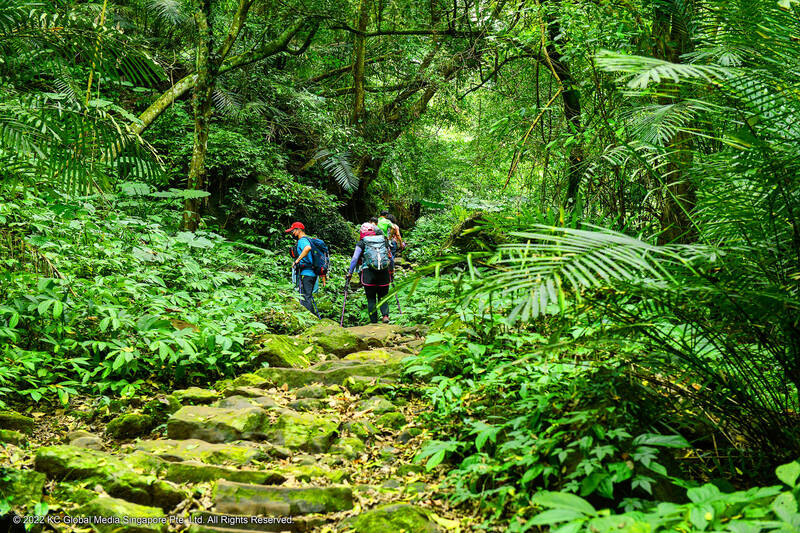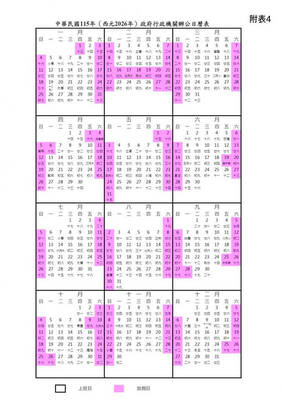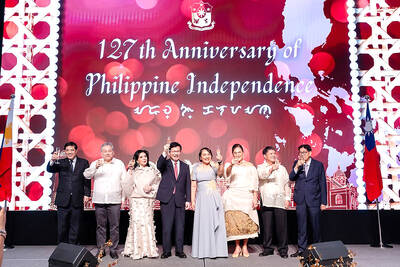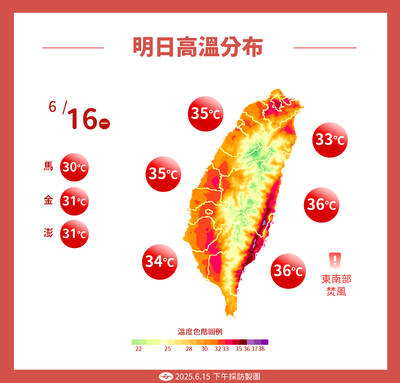Long hiking trails that take days if not weeks or even months to complete serve as cultural and tourist attractions in many nations thanks to beautiful sites and local history.
Think of the 780km Camino de Santiago, the ultimate European pilgrimage route stretching across France, Portugal and Spain, where hikers follow the footsteps of pilgrims who paid homage to Saint James, or Japan’s 1,200km Shikoku Junrei, which invites travelers to visit 88 temples across Shikoku Island.
Unbeknownst to many Taiwanese, much less tourists from abroad, Taiwan has its own distinctive hiking trails, such as the Tamsui-Kavalan Trails, that showcase the nation’s culture and history, as well as the Mountains to Sea National Greenway that emphasizes beautiful scenery.

Photo courtesy of AXN via CNA
Taiwan has since 2016 opened a new hiking trail along Provincial Highway No. 3 between Taoyuan and Taichung, aiming to showcase a road less traveled.
“The Raknus Selu Trail is a historic route that introduces three of Taiwan’s communities,” Taiwan Thousand Miles Trail Association (TMI Trail) chairwoman Chou Sheng-hsin (周聖心) said. “The locations along the trail are packed with history, from the first Han Chinese settlers of Hoklo and Hakka descent to the Atayal and Saisiyat indigenous peoples of the area.”
The trail is anchored in Taoyuan’s Longtan District (龍潭) in the north and Taichung’s Dongshi District (東勢) in the south. The 220km trail takes hikers along routes across the two cities, as well Hsinchu and Miaoli counties. The trek increases to 380km when secondary routes are taken.
Designed by TMI Trail and supported by the Hakka Affairs Council, the trail is the most recent addition to Taiwan’s list of extended hiking routes. Its name comes from the languages of the communities that once traversed and traded along the route. Raknus means camphor in the Atayal and Saisiyat languages, while Selu means trail in Hakka, paying tribute to the tree and camphor’s myriad applications that gave birth to industries in Taiwan.
“The Raknus Selu Trail, especially the Dunan Old Trail in Guanxi Township [in Hsinchu County], was an important route for our ancestors,” said Lo Shih-shu (羅仕樞), a Hakka resident in the county. “In the past, dignitaries would use the roads to commute, while merchants and workers transported camphor, tea leaves and sugar for trade.”
The trail’s history was the subject of the AXN documentary Secrets of the Raknus Selu Trail (樟之細路的秘密), hosted by British photographer Chris Stowers and Taiwanese TV host Danny Wen Shi-kai (溫士凱).
Today, mostly Hakka communities that grow herbs, fruit and vegetables live alongside the trail. Hikers might have the chance to sample Hakka delicacies such as herbal tea and rice-based pastries. They can also visit farms to pick fruits and vegetables.
While many branches of the East Asian culture share similar rituals and art, there are apparent differences between those belonging to different languages. Examples include the Hakka reverence of the Three Great Emperor-Officials (三官大帝) and the Chinese Earth God which they call Bak Gong (伯公), rather than Tu Di Gong (土地公) used in other Han Chinese languages. The Hakka relationship with the deity responsible for soil fertility and cultivation is so profound that a detour on the trail takes travelers to temples and shrines dedicated to the Earth God.
“We Hakka are a hospitable bunch,” Miaoli resident Chen Shan (陳山) said. “And we love to show people our culture when we get visitors from outside.”
The Hakka Affairs Council and TMI Trail have also established visitors’ centers along the trail to further connect visitors with Hakka communities along the route.
“We have established six visitors’ centers in six townships between Taoyuan and Taichung,” Chou said. “These give tourists ideas on places to visit on the route, as well as information on possible accommodation if hikers decide to embark on long hikes that take more than one day.”
Hikers can also acquire trail passports at the centers to make their trip more interesting by trying to collect all the trail’s about 50 stamps, which are available at tourism or religious destinations along the way, she said.
An unveiling ceremony for the fifth center on the trail took place on Nov. 8.
“Not all of the centers are the same,” Guanxi Township Cultural Association chairwoman Emma Chiu (邱美鳳) said.
She said the center operated by her association does not have a stamp like the others, but it serves as a cultural destination.
“The association was founded 20 years ago by locals who aimed to preserve and promote the rich Hakka history of the area, such as the historical trails in our township that we partially excavated ourselves,” she said.
The opening of all of the trail’s centers paves the way for the upcoming Asia Trails Conference, an international walking event designed by Asian trail organizations, which has invited hikers from around the world to Taiwan.
The fourth edition of the event, scheduled to begin on Dec. 1, is to feature the Raknus Selu Trail as a flagship experience.

Taiwan is to have nine extended holidays next year, led by a nine-day Lunar New Year break, the Cabinet announced yesterday. The nine-day Lunar New Year holiday next year matches the length of this year’s holiday, which featured six extended holidays. The increase in extended holidays is due to the Act on the Implementation of Commemorative and Festival Holidays (紀念日及節日實施條例), which was passed early last month with support from the opposition Chinese Nationalist Party (KMT) and Taiwan People’s Party. Under the new act, the day before Lunar New Year’s Eve is also a national holiday, and Labor Day would no longer be limited

COMMITMENTS: The company had a relatively low renewable ratio at 56 percent and did not have any goal to achieve 100 percent renewable energy, the report said Pegatron Corp ranked the lowest among five major final assembly suppliers in progressing toward Apple Inc’s commitment to be 100 percent carbon neutral by 2030, a Greenpeace East Asia report said yesterday. While Apple has set the goal of using 100 percent renewable energy across its entire business, supply chain and product lifecycle by 2030, carbon emissions from electronics manufacturing are rising globally due to increased energy consumption, it said. Given that carbon emissions from its supply chain accounted for more than half of its total emissions last year, Greenpeace East Asia evaluated the green transition performance of Apple’s five largest final

Taiwan is to extend its visa-waiver program for Philippine passport holders for another year, starting on Aug. 1, Minister of Foreign Affairs Lin Chia-lung (林佳龍) said on Friday. Lin made the announcement during a reception in Taipei marking the 127th anniversary of Philippine independence and the 50th anniversary of the establishment of the Manila Economic and Cultural Office (MECO) in Taiwan, the Ministry of Foreign Affairs said. The decision reflected Taiwan’s commitment to deepening exchanges with the Philippines, the statement cited Lin as saying, adding that it was a key partner under the New Southbound Policy launched in 2016. Lin also expressed hope

Temperatures in New Taipei City’s Sindian District (新店) climbed past 37°C yesterday, as the Central Weather Administration (CWA) issued heat alerts for 16 municipalities, warning the public of intense heat expected across Taiwan. The hottest location in Taiwan was in Sindian, where the mercury reached 37.5°C at about 2pm, according to CWA data. Taipei’s Shilin District (士林) recorded a temperature of 37.4°C at noon, Taitung County’s Jinfeng Township (金峰) at 12:50 pm logged a temperature of 37.4°C and Miaoli County’s Toufen Township (頭份) reached 36.7°C at 11:40am, the CWA said. The weather agency yesterday issued a yellow level information notice for Taipei, New